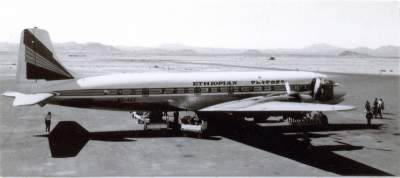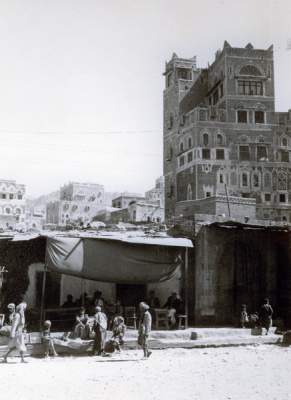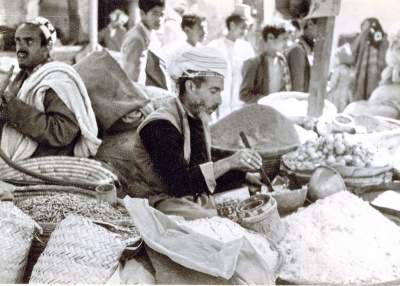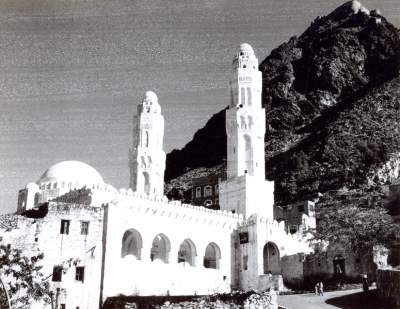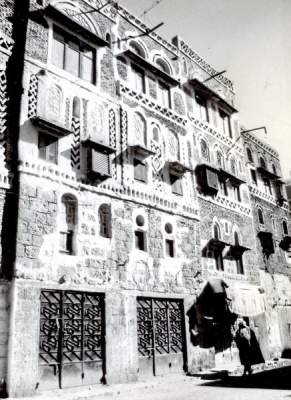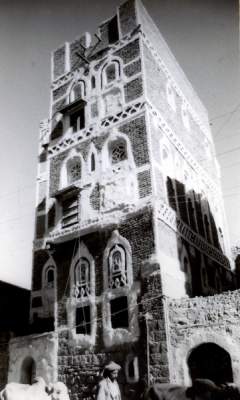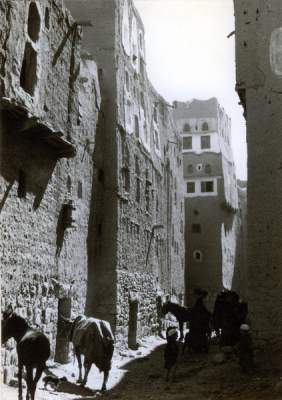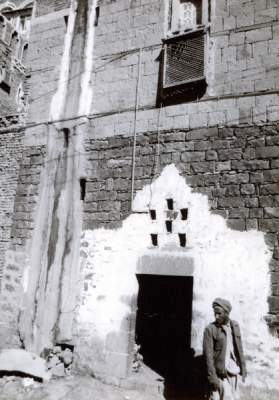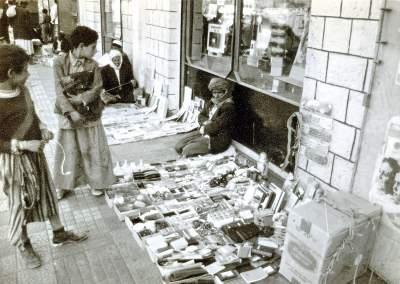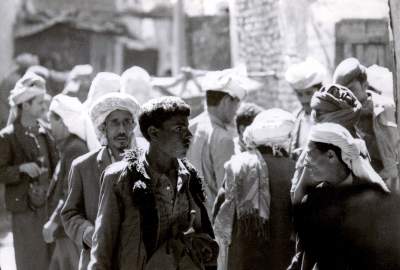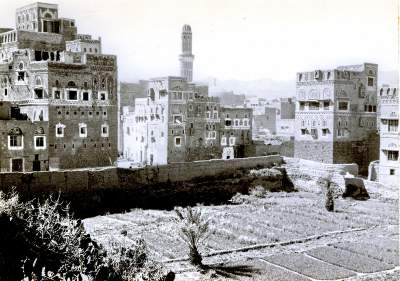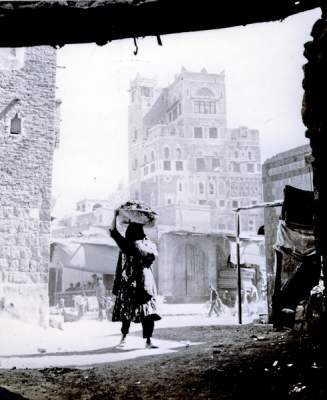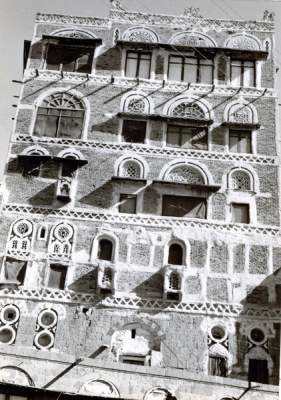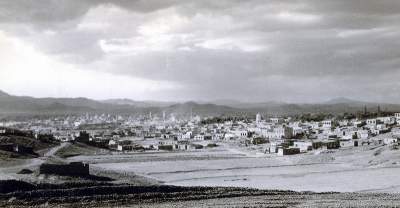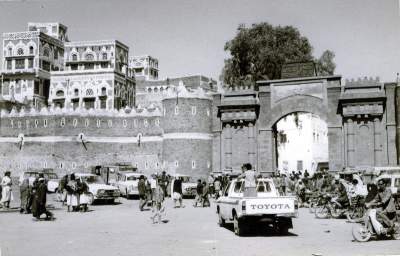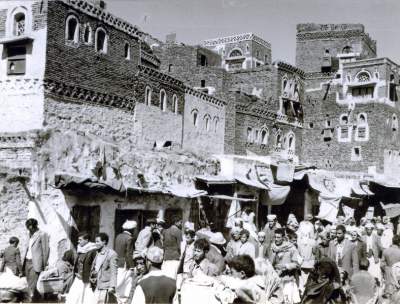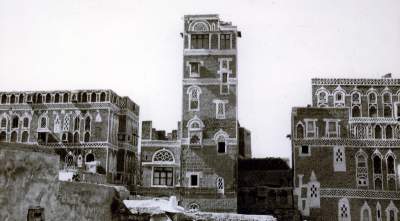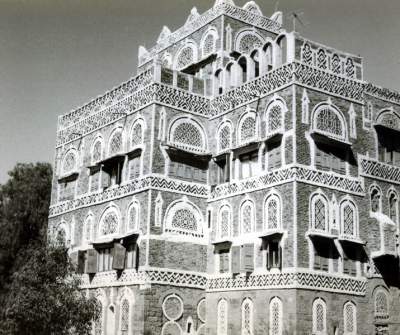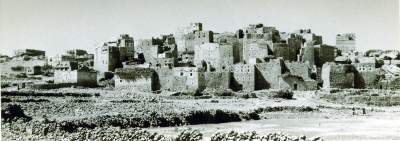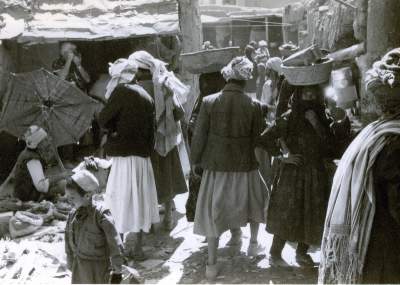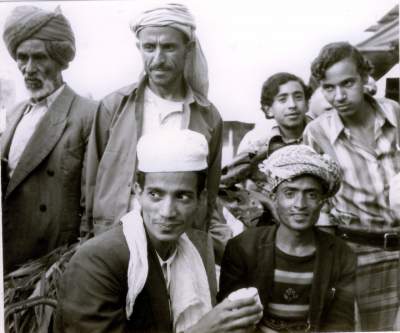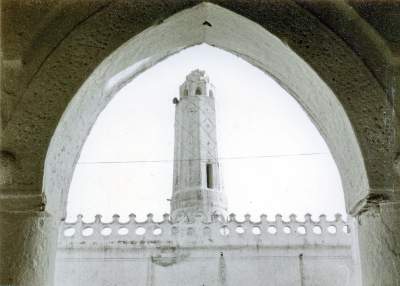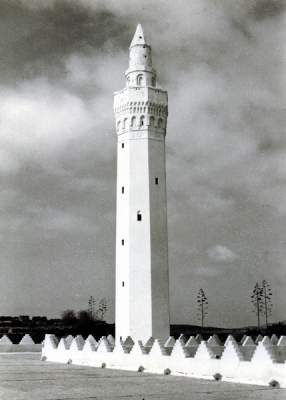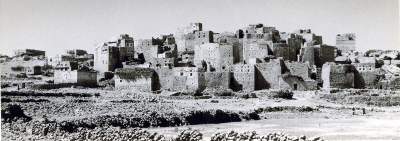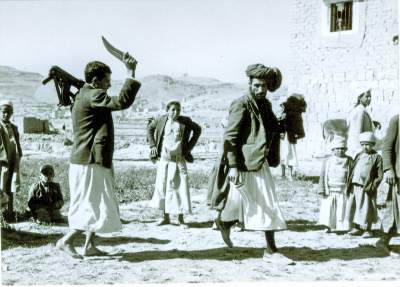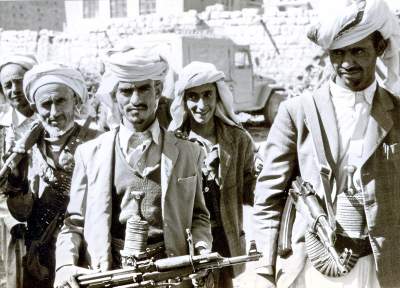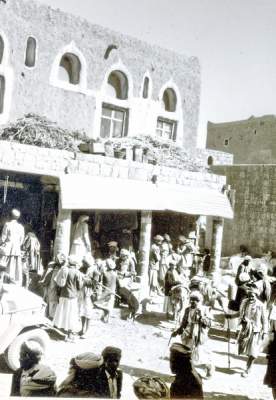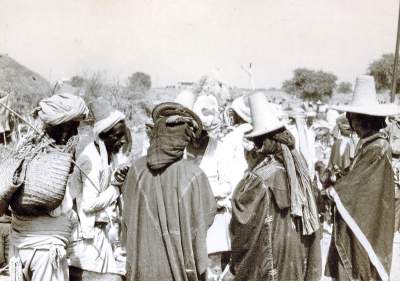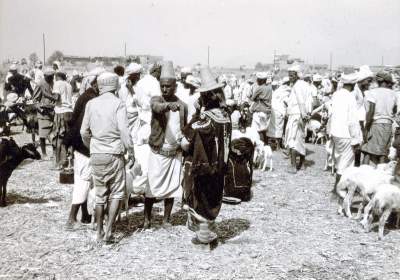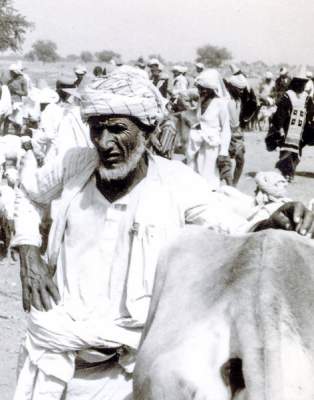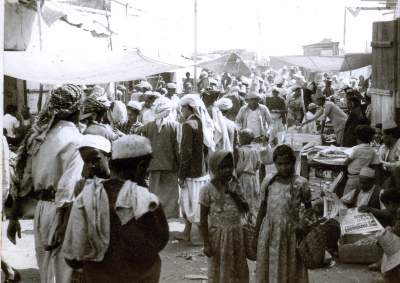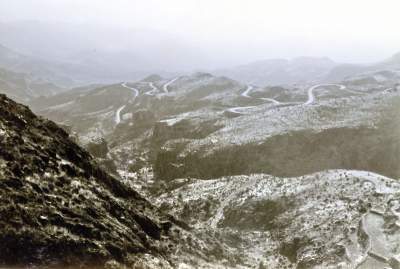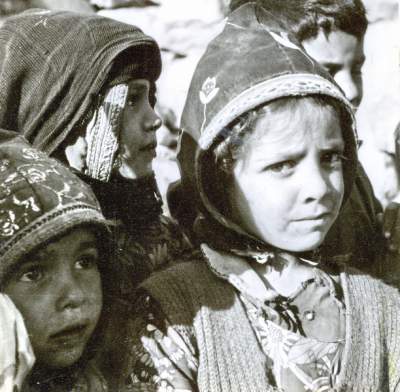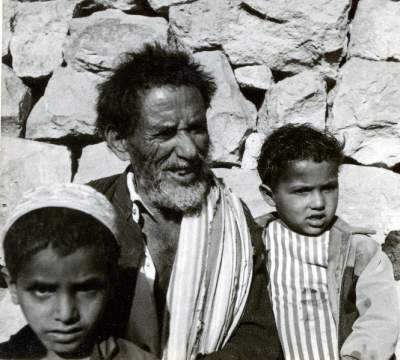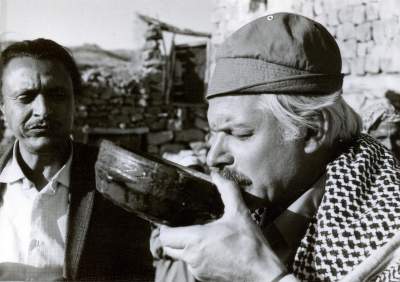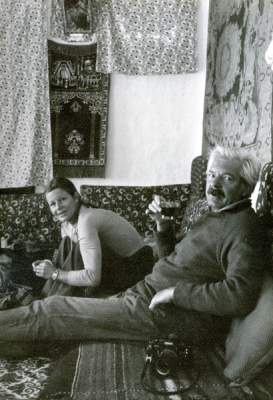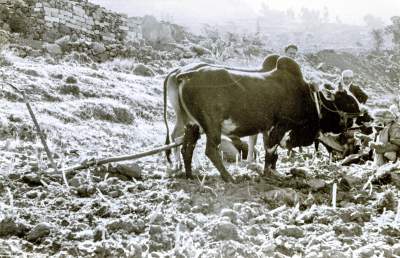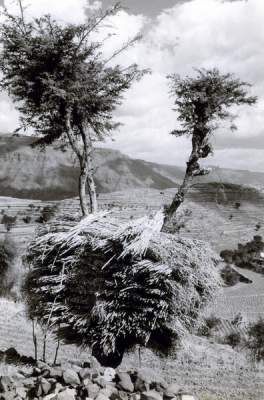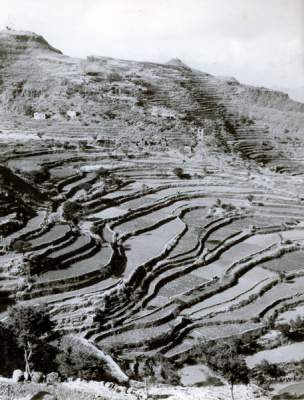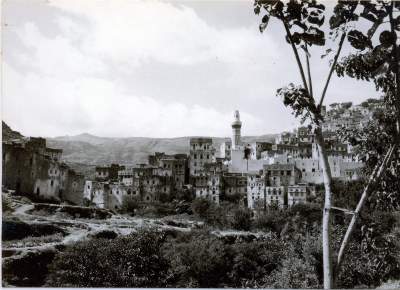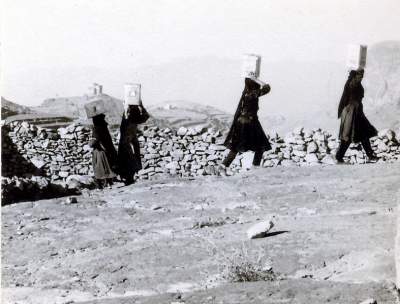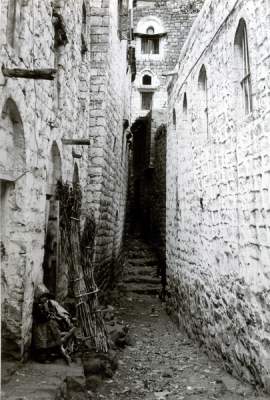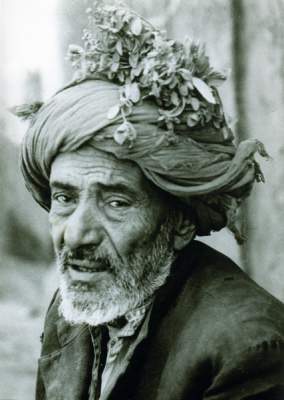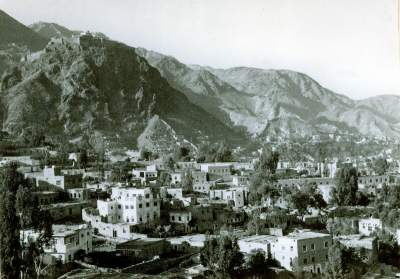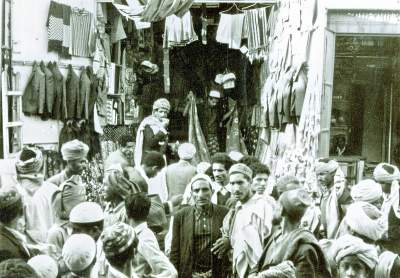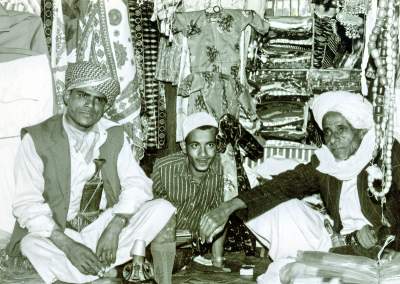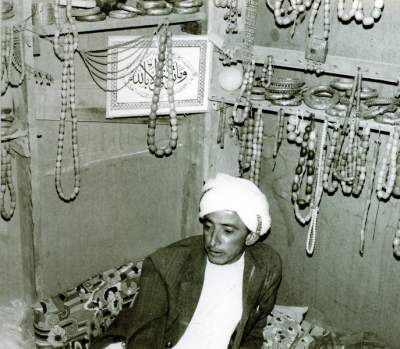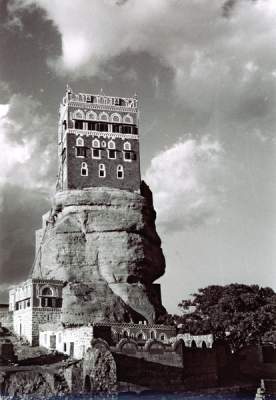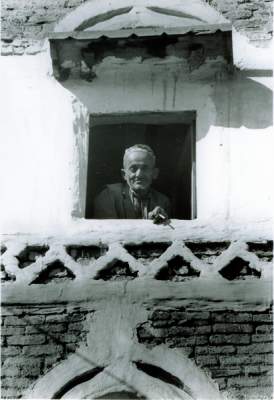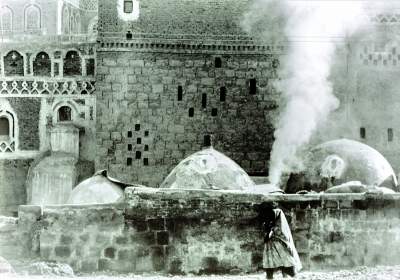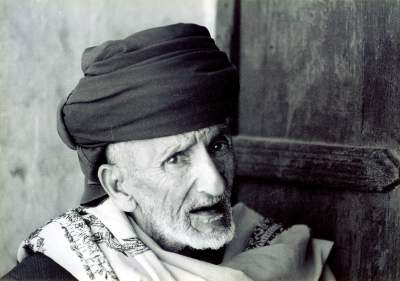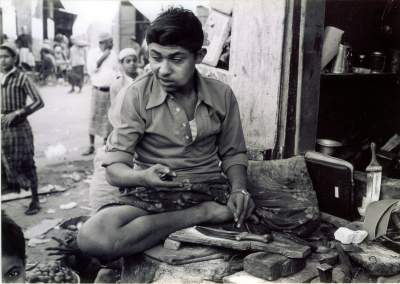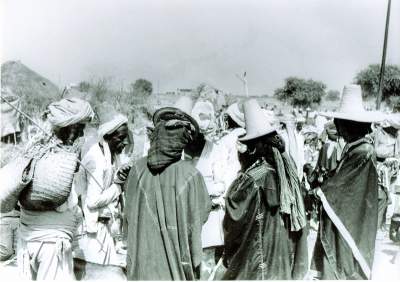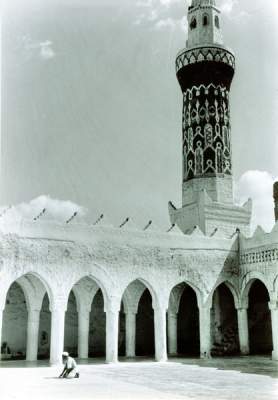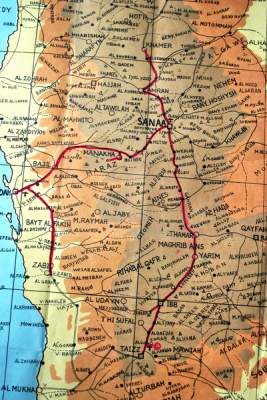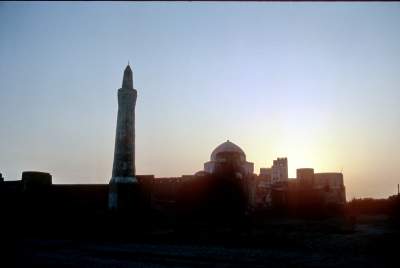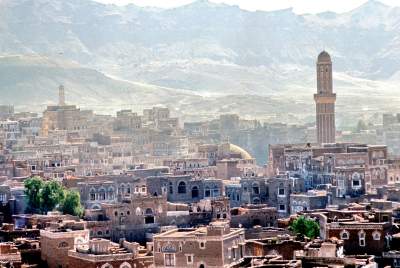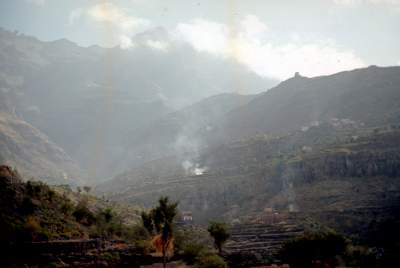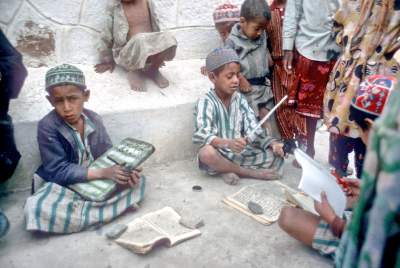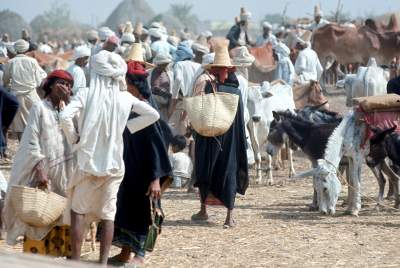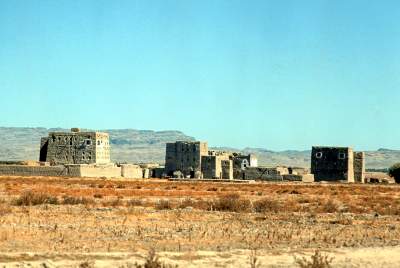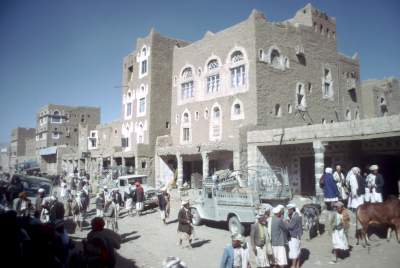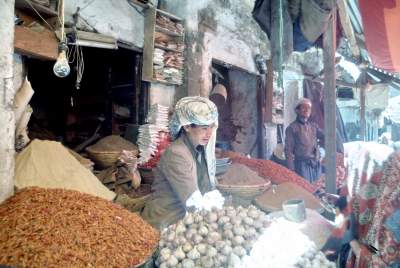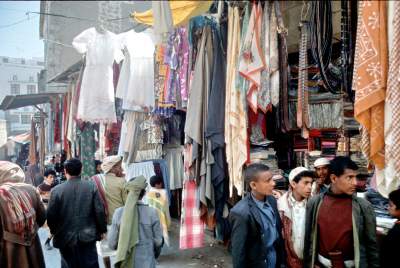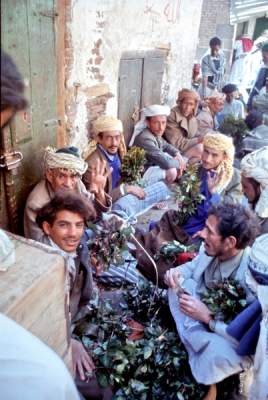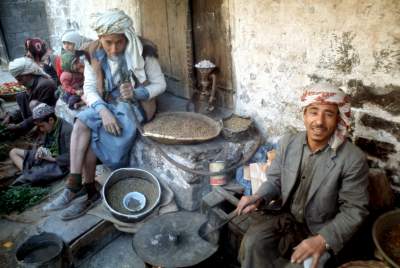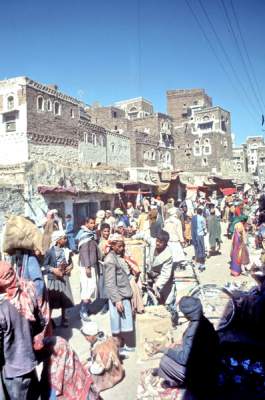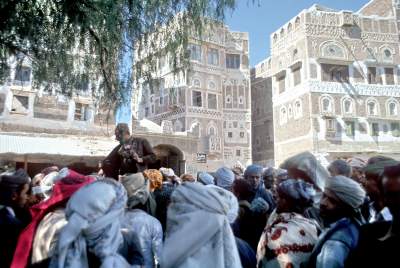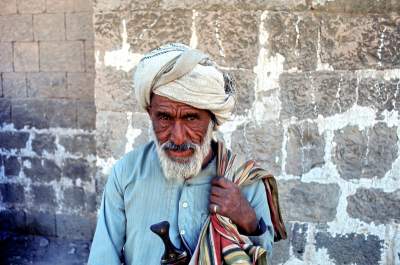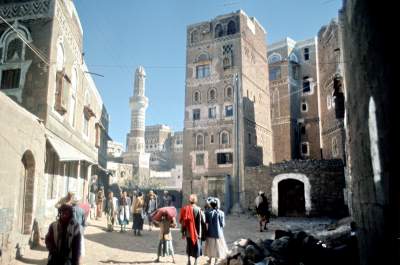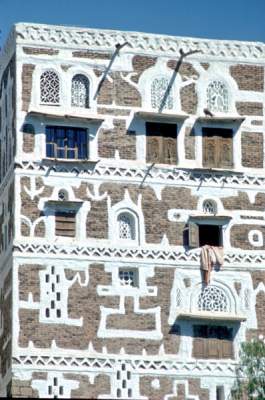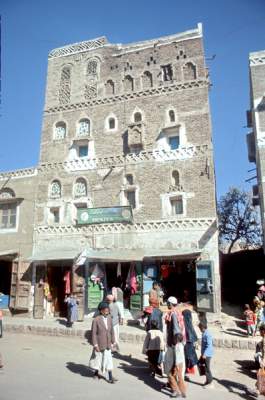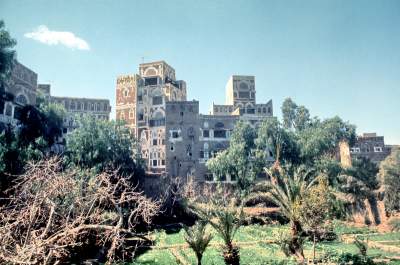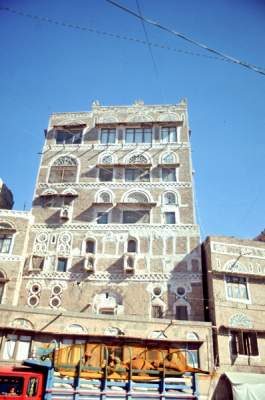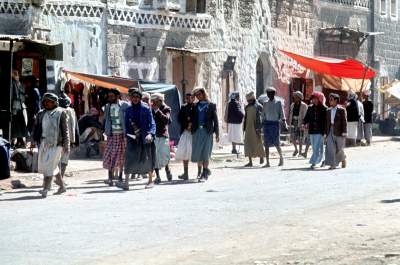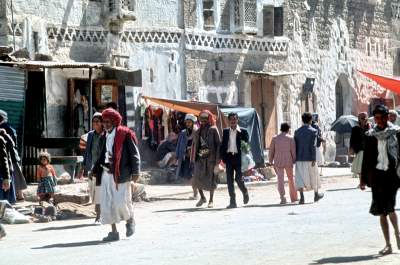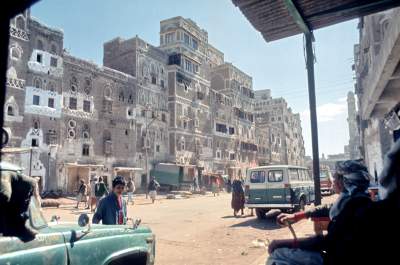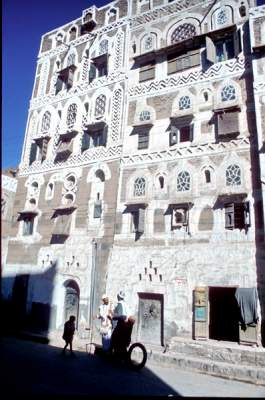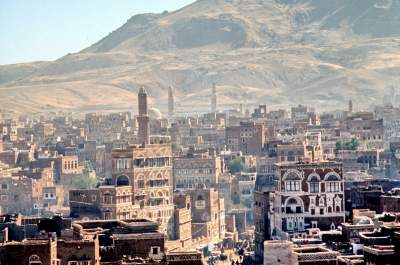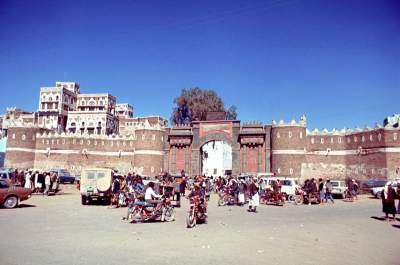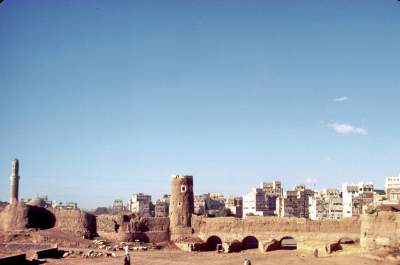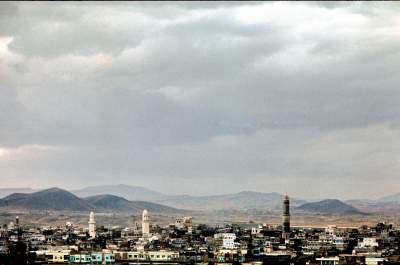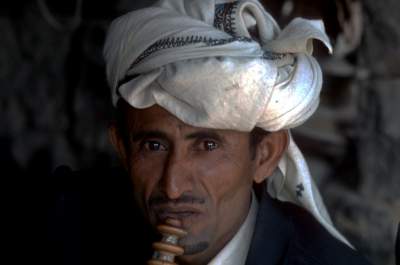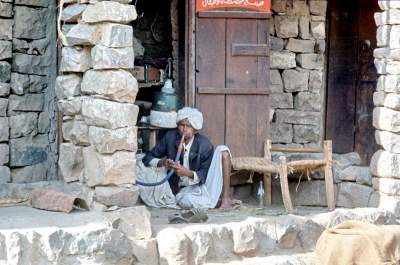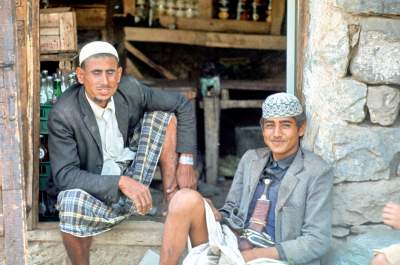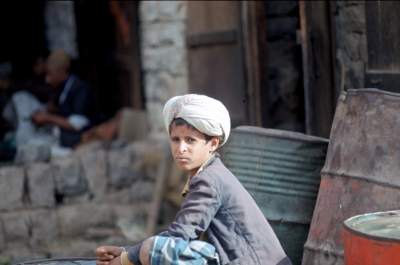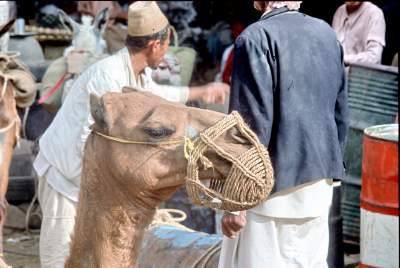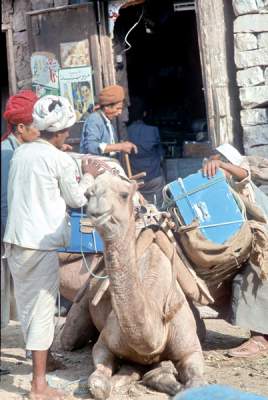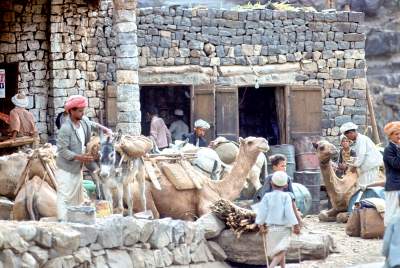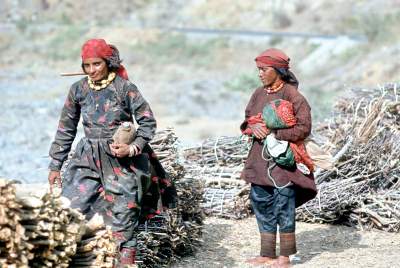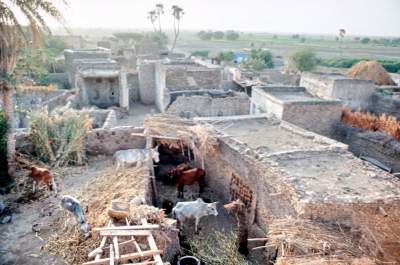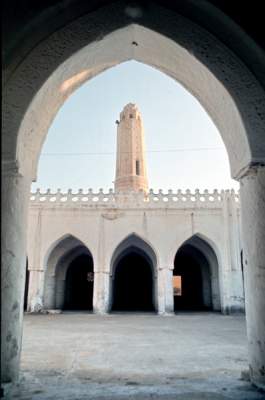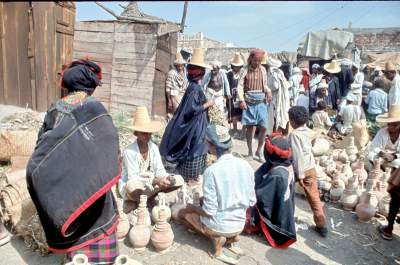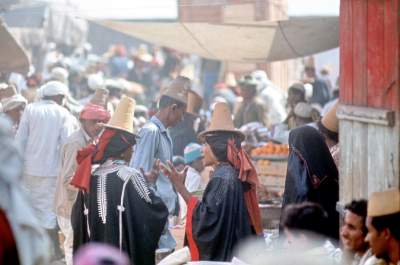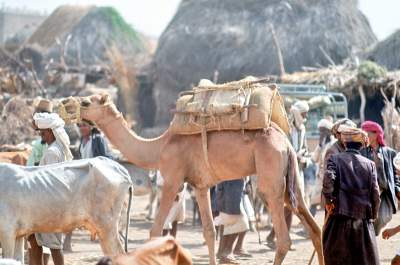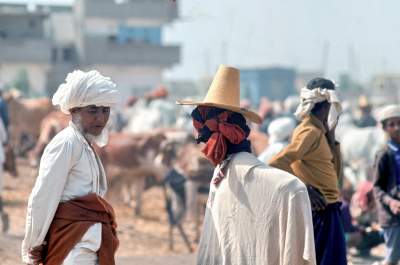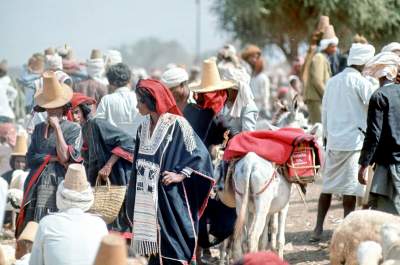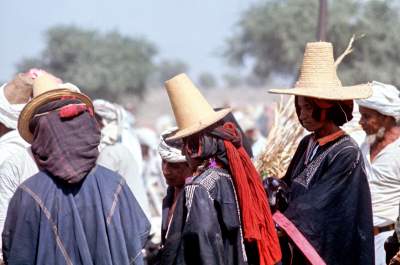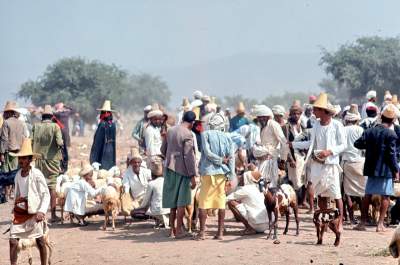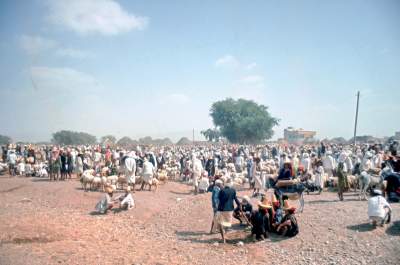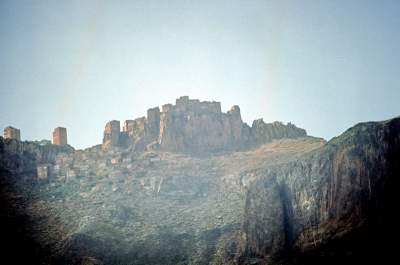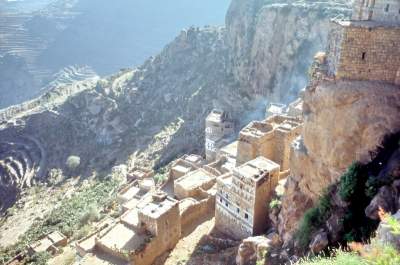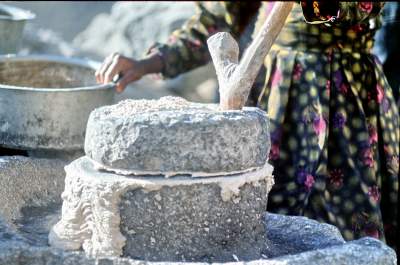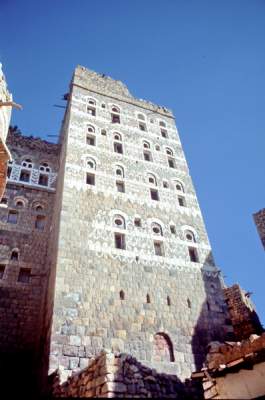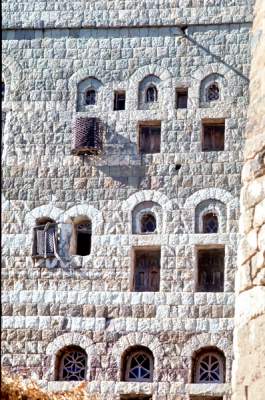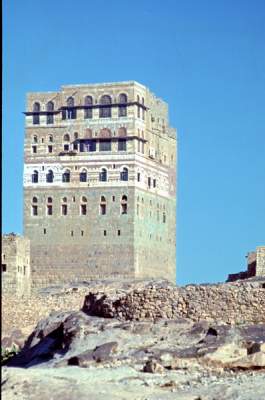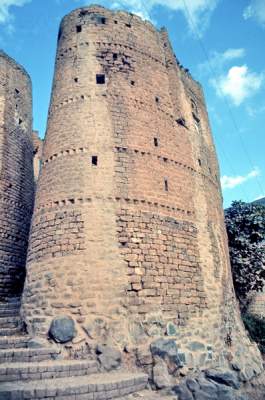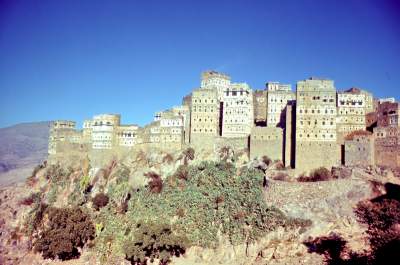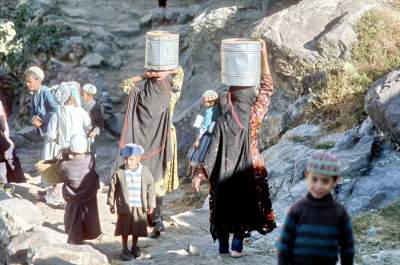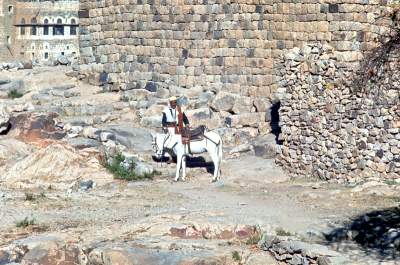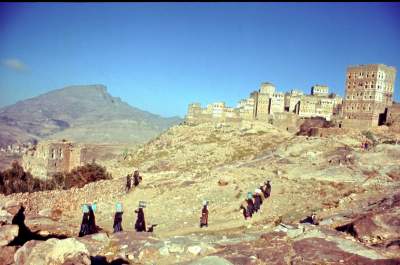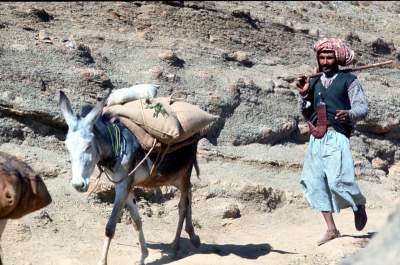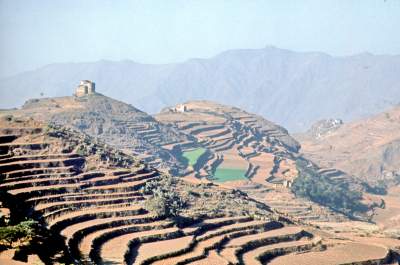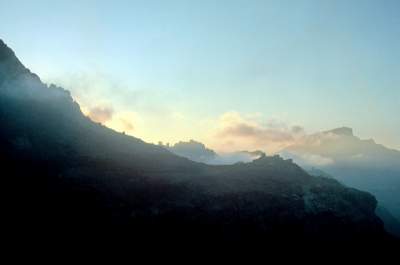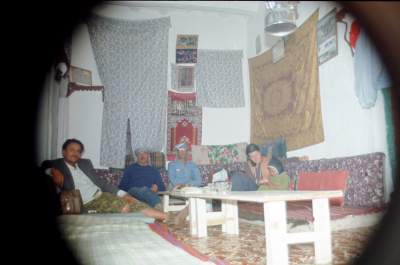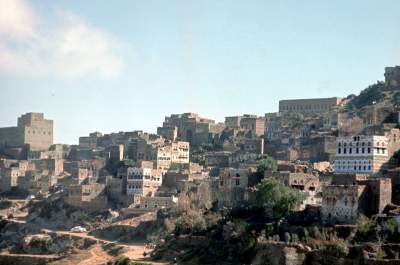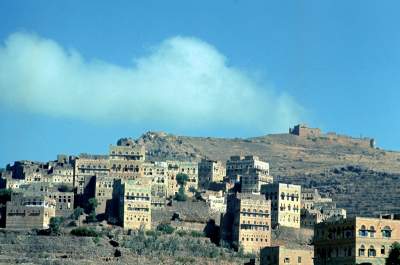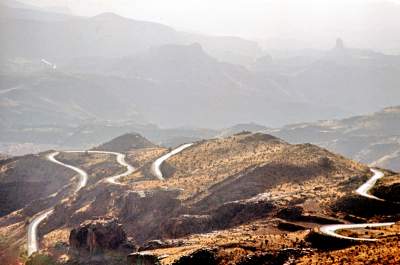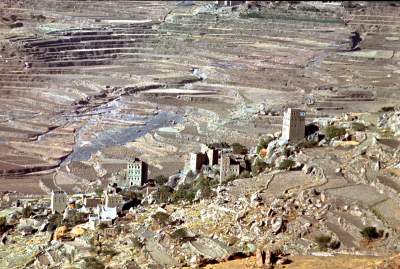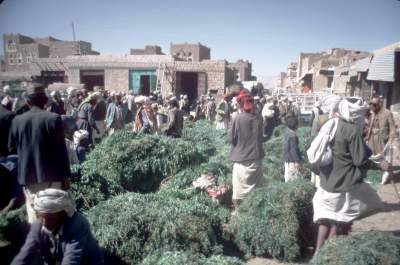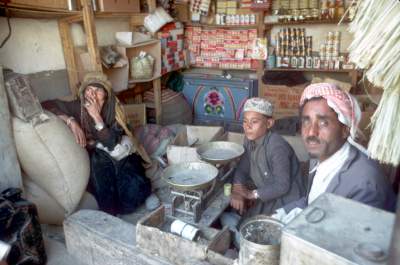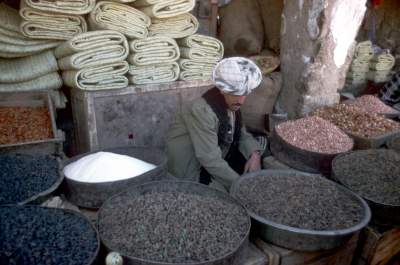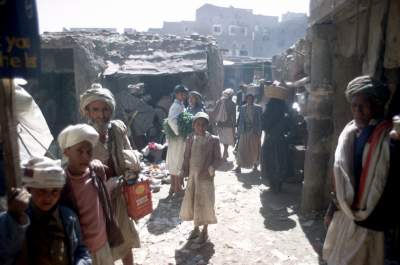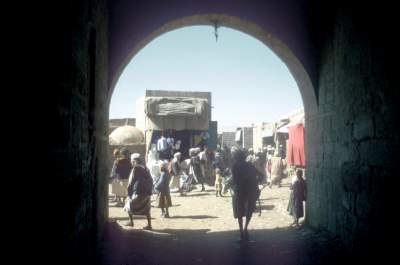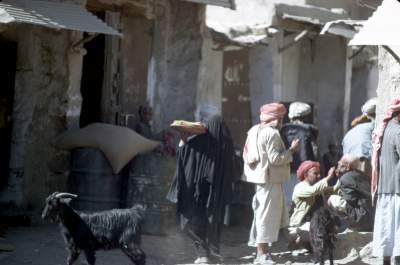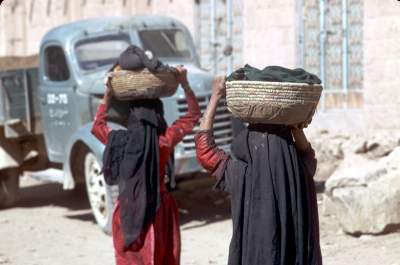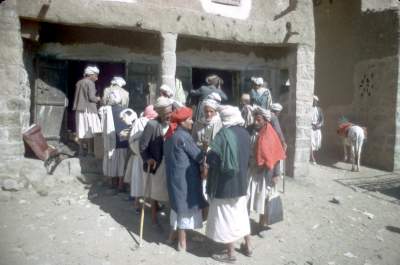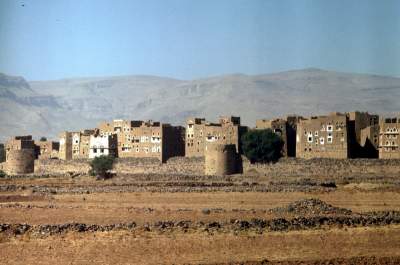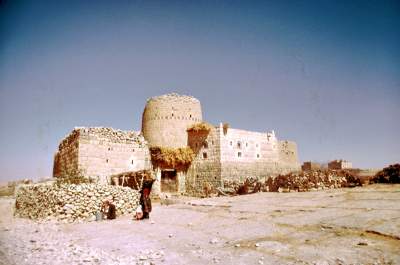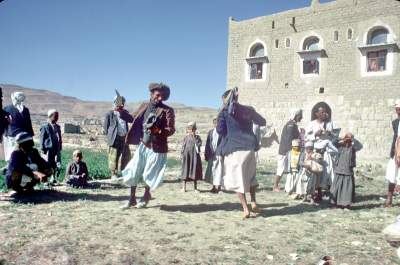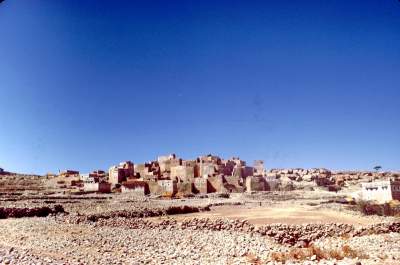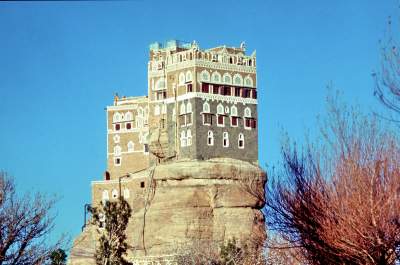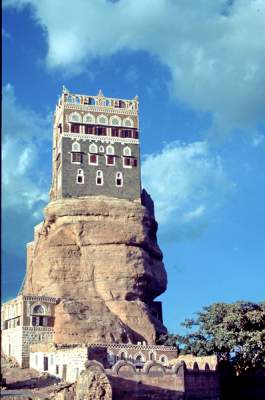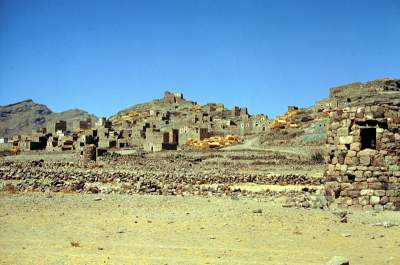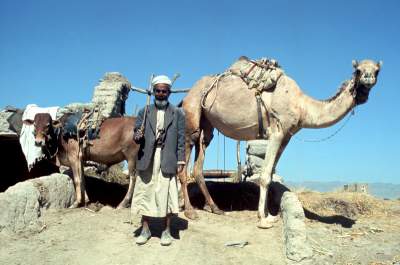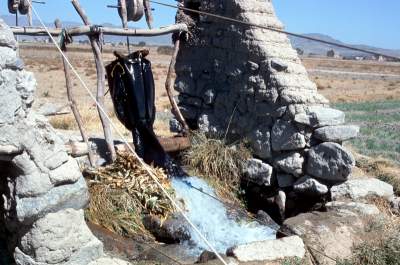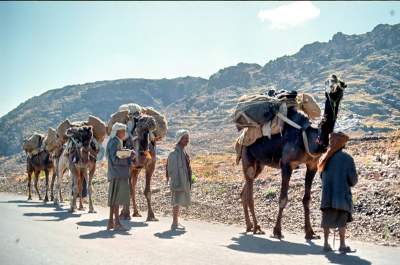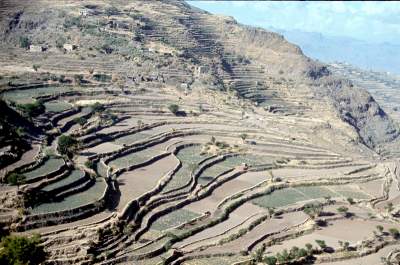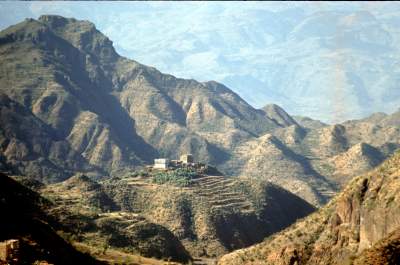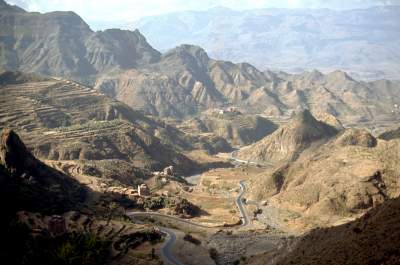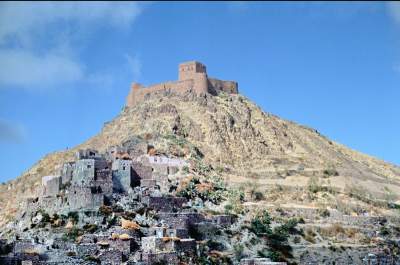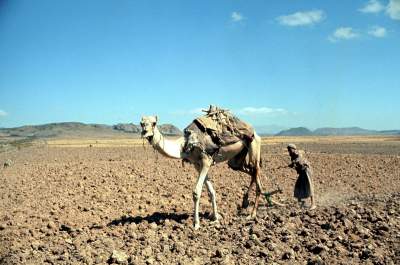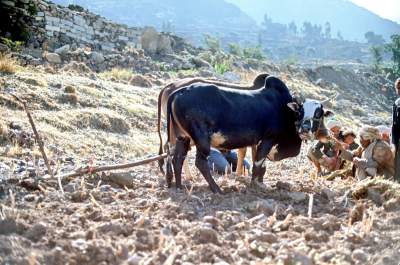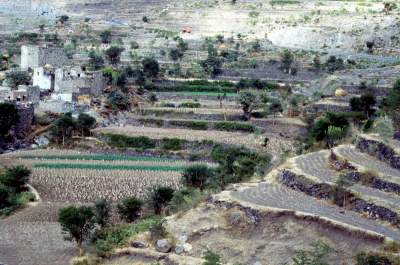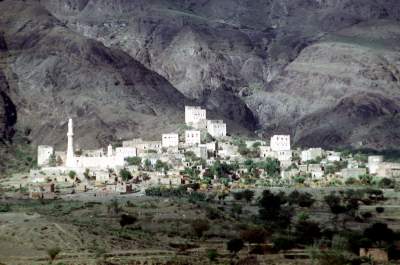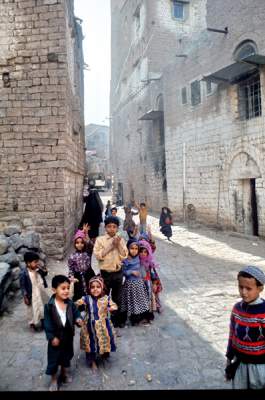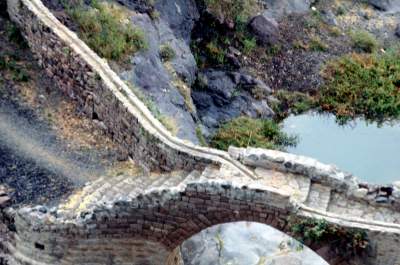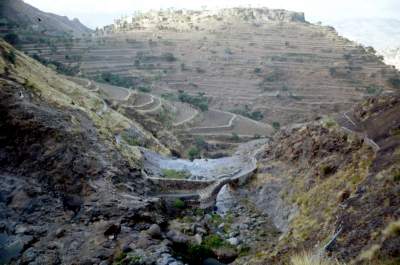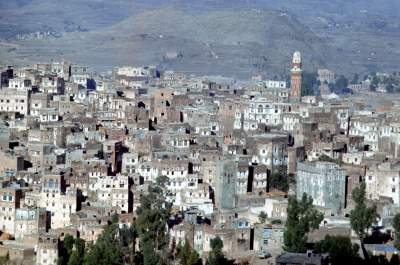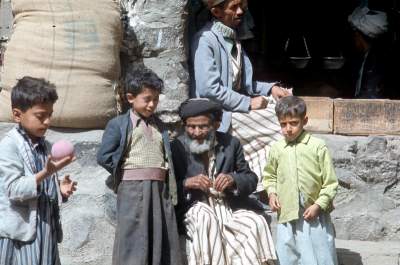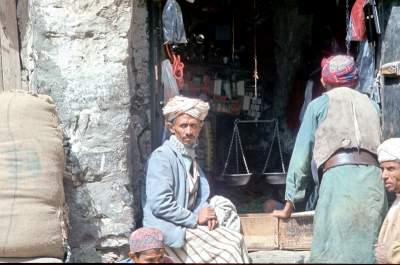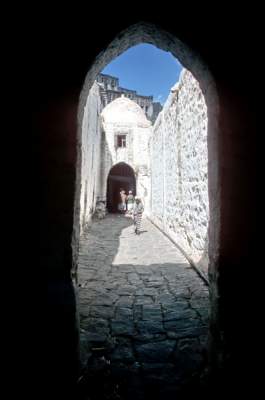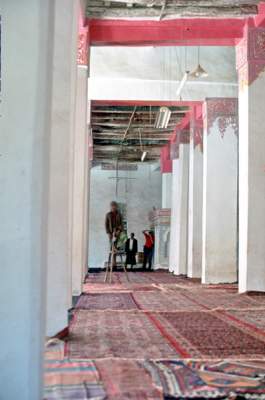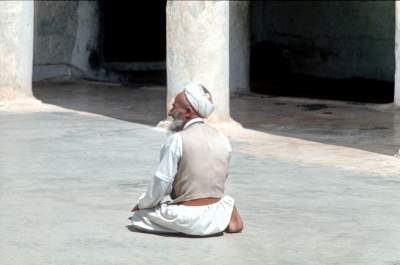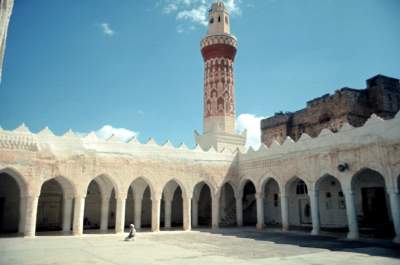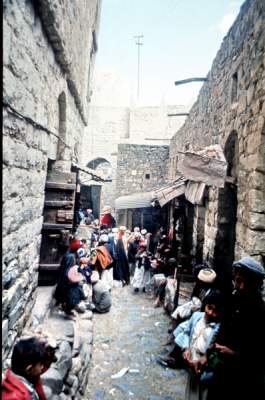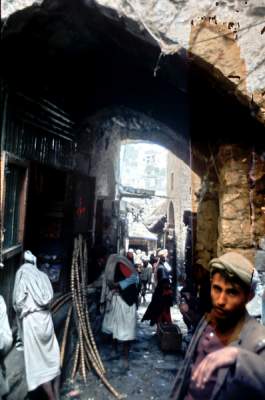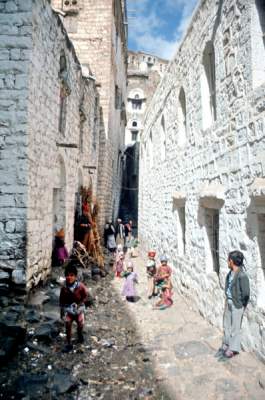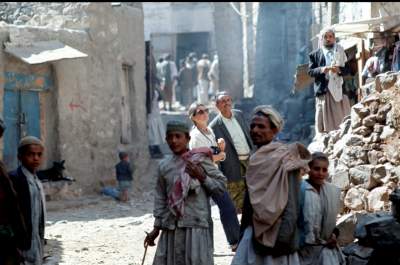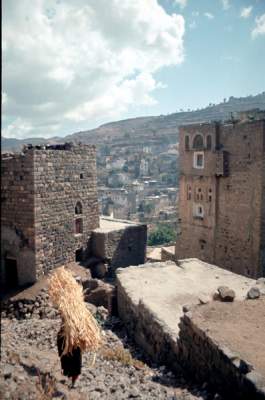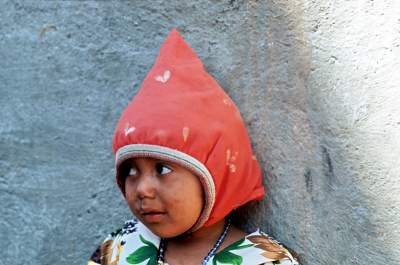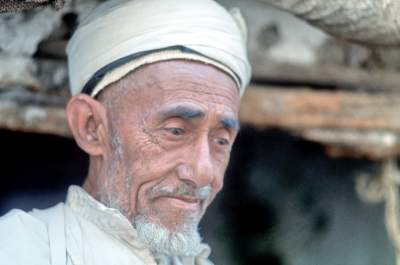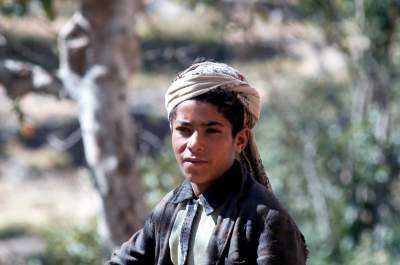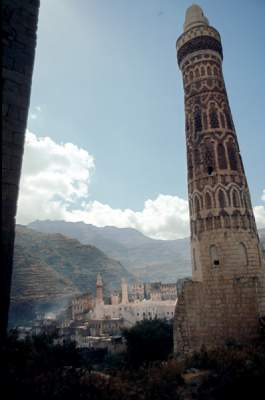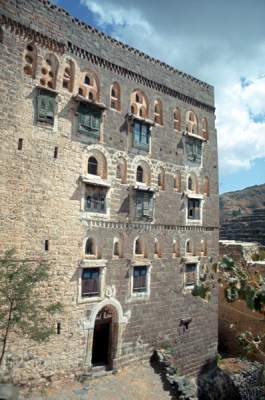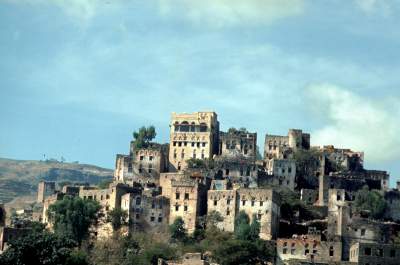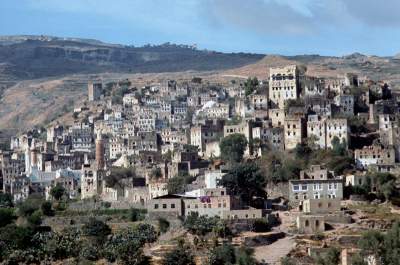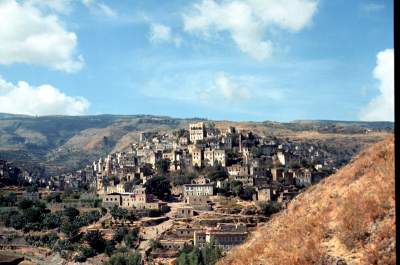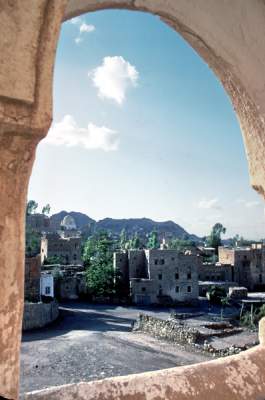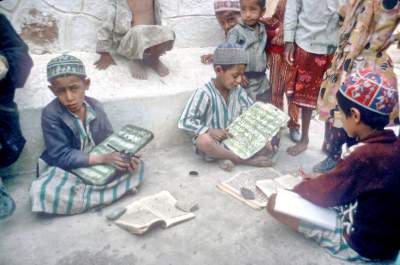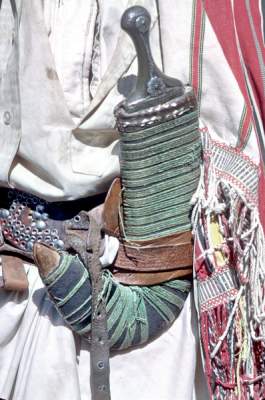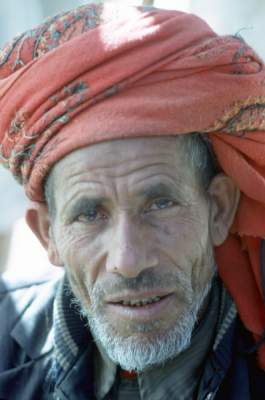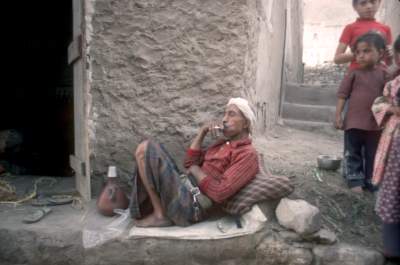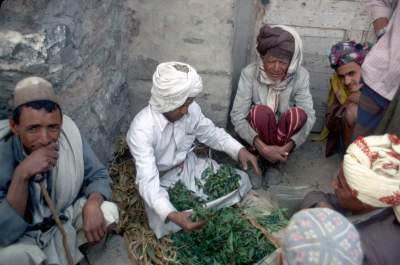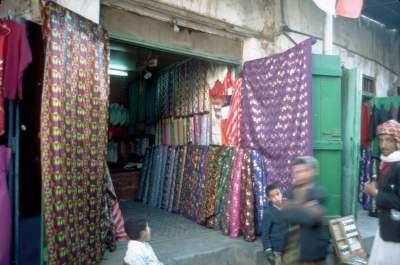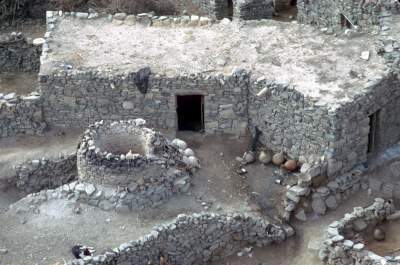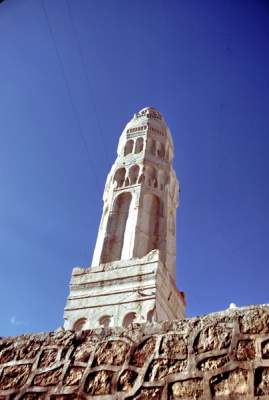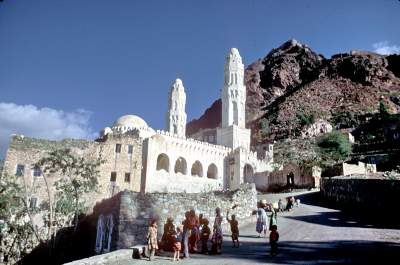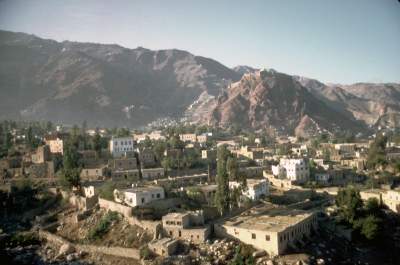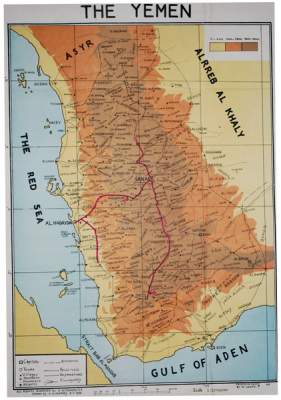PHOTO GALLERY
AND
ACCOUNT OF MY TRAVEL TO YEMEN
JANUARY 1976

Charles van Santen
Bogor Indonesia
2009
Fascinated by reading the story of the famous 17th Century Danish Expedition 1761-1767 to Yemen, with included the first modern description of the Yemen, I planned to visit this country myself.
Unfortunately Yemen has always been a difficult place to visit. Even in the twentieth century nearly continuous civil wars, hostile governments, roaming vagabonds, rugged country side and an underdeveloped road system made it difficult to visit the country. The last coup had been as recent as 1974, less than two years before my trip and only one year after my trip there was another coup in which Ibrahim al Hamdi, the president from 1974-1977, was also murdered. Civil wars have troubled the country till the late 1990’s.
However, when living in Addis Ababa, Ethiopia between 1975 – 1979, where I was assigned by the United Nations Development Program to work in the Ethiopian Settlement Project, the prospect to visit Yemen became finally more feasible, in spite that in general tourists visa for Yemen were not yet issued in that period.
My friends, Pierre and Lydia Bonnemaison, a French couple working at another United Nations Project in Addis Ababa managed to obtain a special United Nations visa for Yemen, through their colleagues working in the UNDP office in Sana, Yemen’s capital. They invited me to join their trip to Yemen in January 1976, which invitation I immediately accepted. Pierre and Lydia were very nice persons. They shared with me a great interest in visiting historical places and were also keen photographers.
Thus on 2 January 1976 we boarded in Addis Ababa our Ethiopian airlines flight to Taiz. Our plane was a DC6 or Constellation, a turbo prop plane built in the late 1940s, at least thirty years old at that time. At noon we arrived in Asab, 850 km east of Addis Ababa, near the Red Sea, where we landed at a desolate empty airstrip in the hot Ogaden desert. The only other plane on the airstrip in Asab was an even older DC3 built in the early 1940s, which plane was stranded with a mechanical failure. Immediately after our arrival the pilots and board mechanics of the two planes started to work on solving this problem. Finally about four thirty they succeeded in having the DC3 repaired. To start his engines the DC 3 pilot had to borrow the battery set of the DC6, after which he could finally return to Addis Ababa for further repairs. After the battery set was again mounted in the DC6 we continued our flight to Taiz, some 250 km further east, where we arrived just before sunset.
However at that hour the Taiz airport was deserted and our pilot had to land the plane without any support from the tower. All airport staff had already returned to Taiz at 3 PM to join the daily qat sessions. Qat- Catha edulis- is a drug which when chewed is making one high. Chewing qat is the daily habit in Yemen for most man.
The only person available in the airport was one old watchman, with an enormous mustache and a fierce looking djembella- or short sword, who took all our passports in his head cloth. We were told that we could collect our passports the next morning. The Yemeni passengers of the plane kindly arranged taxis for us all.
Arriving after dark in Taiz, we felt to be back in the middle Ages as there were no street lights. Only a few shops were open, using small kerosene lamps as light source. All people we met were dressed in traditional Arab clothing. The hotel was simple but had at least electricity. We were served saltah, the main Yemen meat dish with pieces of meat in a greenish looking vegetable soup made from fenugreek powder and served with chubuz, the Arab type of flat bread. These experiences on our first day to Yemen formed a good example of further experiences during our trip through Yemen. Yemen was in the 1970’s still basically a country in the middle Ages!
The next day, our driver Ahmad, after helping us to collect our passports from the airport showed us around in the colorful traditional markets. We also saw beautiful traditional Yemen tower houses, which often are constructed with up to nine floors. The lower floors of these tower houses are constructed from natural stone blocks while the upper floors are from made from red bricks and are usually white washed. Windows are small to allow women to look outwards without being seen by outsiders who can not look inwards. The lower floor is for housing the cattle, sheep and goats and horses, the middle floor for storing grain, oil and other food stuff. On the next floor is the diwan, the main reception room, with cushions alongside the wall for the visitors. The upper floors contain the personal rooms for the family, including kitchen en bed rooms. The floors are reached via narrow circling staircases, similar to circling stair cases in old towers of Europe. A particular feature of most Yemeni houses is a gulley on the front side, through which all wet and dry house waste is deposited to the street in front of the house. The streets in the traditional parts of Taiz are narrow but behind the houses one finds large gardens with fruit trees, vegetable and fodder plots.
Thereafter we traveled around the country following the route shown on the map and enjoyed the beautiful country side and the marvelous traditional Yemen building style of with the tall houses made from nature stone and bricks.
Starting in Taiz, we traveled over the highlands via Djanet, Jibbla and Ibb to Sana. From Sana we first made a trip to the coast at Zabid and Hodeida. Travelling over de road down from the 2000 m plateau on which Sana is located to Hodeida at sea level we used the road constructed by the Chinese in the early 1970s. This road is marked by at least 200 bends over a distance of only a 100 km. On our way to the cost, the Timaha, we had a wonderful overnight stay in Manaka, in a traditional Yemenite house, as is shown in the photos.
We visited the colorful market in Bait El Faquih and our next overnight stay was in Zabid, the town, where it is claimed that algebra was first developed. In Zabid we slept on the roof of the guesthouse of the staff of an irrigation project as Zabid had no hotels at that time. We returned to Sana via the port of Hodeida. Our second trip from Sana was to the north where we visited the colorful towns of Khamer and Amron and saw among others very impressive sword dances. Hereafter we spent two days in visiting the many colorful markets of Sana, before returning to Addis Ababa.
By about 1 000 BC several Yemeni kingdoms had been established which were involved in the frankincense and myrrh trade. Frankincense was grown in Dhofar, Hadhramawt, located in South East Yemen. From Dhofar the incense was shipped by camel via North Yemen to Arabia and Mesopotamia. The camel had been domesticated during the second millennium BC and was thus by 1000 BC available.
The most well known Yemeni kingdom from this period was the Sabaean kingdom. In particular the famous Sabaean Queen of Sheba is known from her travels to king Salomon of Ethiopia around 1 000 BC. The Sabaean Kingdom lasted for 1 300 years, but the height of its power was 7th Century BC when the great Marib Dam was constructed in the east of Yemen. In the same period the Kingdom of Hadhramawt was located in South East Yemen, later succeeded by the Awsan Kingdom 800-650 BC and the Ma’in Kingdom from 625 BC- AD 25.
In the first Century BC the need for incense had been largely increased among others by the demand from the Roman Empire and other European countries. As shipping had been further developed both in capacity and safety, most of the incense was since then shipped by sea. This implied that camel transport from south to north Yemen was gradually phased out and Yemen became again a very isolated country. The kingdom of Himyarite 110BC-25 AD played an important role in this period.
During the sixth century AD the Yemen was conquered by the Abyssinians from Ethiopia. Their last king Abrahah from Aksum, 7th Century, tried to conquer Mecca, but was defeated in the process, which marked the end of the Abyssinian rule over the Yemen. Briefly the country was conquered by the Persians, however in AD 628, Badhan, the last Persian Governor of Sana converted to Islam and the Yemen became nominally Moslem. Initially there was much resistance to the attempts to convert the Yemen population to islam but probably by force the country was gradually converted to ideology, similar to other countries at that time in which islam was introduced by Arab conquerors. Muhammad after the conquest of Mecca AD630 made a specific attempt to convert the Yemeni to islam, who after it is claimed that the became faithful followers of Islam.
In the controversy and fights approximately 660 AD between Ali the fourth caliph and Mu”awiyah, the self proclaimed caliph of the western regions of Islam covering Syria and nearby located regions, many Yemeni joined either the one or the other sides as by that time they were already fully committed to islam.
After Ali, the fourth Khalif, was murdered in AD661, his successor, Mu’awiyah established the Umayyad dynasty which lasted for the next 90 years. During the Umayyad dynasty Yemen became a backwater of the Muslim world.
From AD 750 the Abbasid dynasty in Baghdad replaced the Umayyad caliphate and ruled Yemen harshly through its governors, controlling the many Yemeni tribal rebellions, particularly started by Shi’iti adherents.
In AD819 the Abbasid caliph sends Muhammad bi Ziyad to stop the rebellion in the Tihama the lowlands of Yemen and set up a new capital in Zabid. In the end the Ziyad dynasty established an independent kingdom of the Ziyads in the lowlands, similar to Yu’fir, the governor of Sana who established in Sana an independent kingdom, separate from the Abbasid caliphs in Baghdad. During the next few centuries the country remained very un-restful whereby most local tribal groups were fighting each other. Finally during the 16th century Yemen was gradually conquered by the Ottoman Empire. This period ended in 1620 when Zaydi Imam Qasim expelled the Turks from the country. From 1620 onwards the northern part of the country was again ruled by the Zaydi dynasty, while independent sultanates were established in the South of the Yemen.
The second Ottoman occupation started in 1849, when the Turks returned and conquered much of the north. Fighting between the Ottomans and the Zaydis was nearly continuous until in 1911 Imam Yahya signed with the Ottomans the Treaty of Da’in, giving up the Tihama lowlands to the Ottomans and reserving the highlands for his own imamate. After the First World War the Ottoman Empire collapsed, the British took over the Tihama and gave control to Muhammad Al-Idrisi. Following his death, Imam Yahya and the Saudi Arabian rulers quickly competed to grab up the land.
For the next 40 years, Imam Yahya ruled the country with iron hand. He was assassinated in 1948 by the members of the Free Yemeni Movement. However his son Imam Ahmad managed to regain the country and ruled till 1962 when he was also assassinated. His son, Imam Muhammad Al- Badr, succeeded him as the Zaydi Imam. Immediately civil war broke out and the Republican Party, assisted by Egypt finally conquered the country in 1970 and established the Yemen Republic. After the British left South Yemen in 1967, the People’s Democratic Republic of Yemen, the only Arab Marxist state in world history, was established in South Yemen.
During the 1970s most of the presidents of the Yemen Republic in north Yemen were either exiled or murdered. Only in 1989, after the collapse of the Soviet Union the two Yemeni republics merged into one country with Ali Abdullah Saleh as president till today, 2009.
- Gérard Bernard, 1972, Yemen Photobook, Edition Delroissse. Paris
- Hansen Thorkild, 1964 Arabia Felix Danish Expedition 1761-1767 Carsten Niebuhr Collins London
- Holden David, 1966, Farewell to Arabia Faber & Faber London:
- Travel Map Yemen, 1972
- Phillips Wendell 1955, Opgravingen in het land van Qataban & Sjeba
- Mackintosh-Smith Tim, 1997, Yemen Travels in Dictionary Land, John Murray
- Mclaughlin Daniel 2007, Yemen Travel Guide, The Globe Pequot Press,USA
Our travel schedule
| Date January 1976 | Location |
| Jan 2 | Addis Ababa-Taiz ,Yemen with Ethiopian airlines with stop in Asab ( DC3 low battery) |
| Jan 3 | Djanet mosk ,Taiz souks, Imam’s palace |
| Jan 4 | Taiz- Jibbla by car via Ibb-mosk to hotel in Jibbla |
| Jan 5 | Ibb –Sana- Hotel Biligis Throne- 5 PM. Wadi Dhar Summer palace built on a rock by the Imam in 1930 |
| Jan 6 | Sana Nanakha – hotel |
| Jan 7 | Manakka- Hoggara- Zebid- hotel |
| Jan 8 | Zebid-Bait El Faquih – Hodeida- Sana |
| Jan 9 | Sana souks |
| Jan 10 | Sana Khamer Amron- Sana |
| Jan 11 | Souks Sana Sana- Addis Ababa Et 623 |

